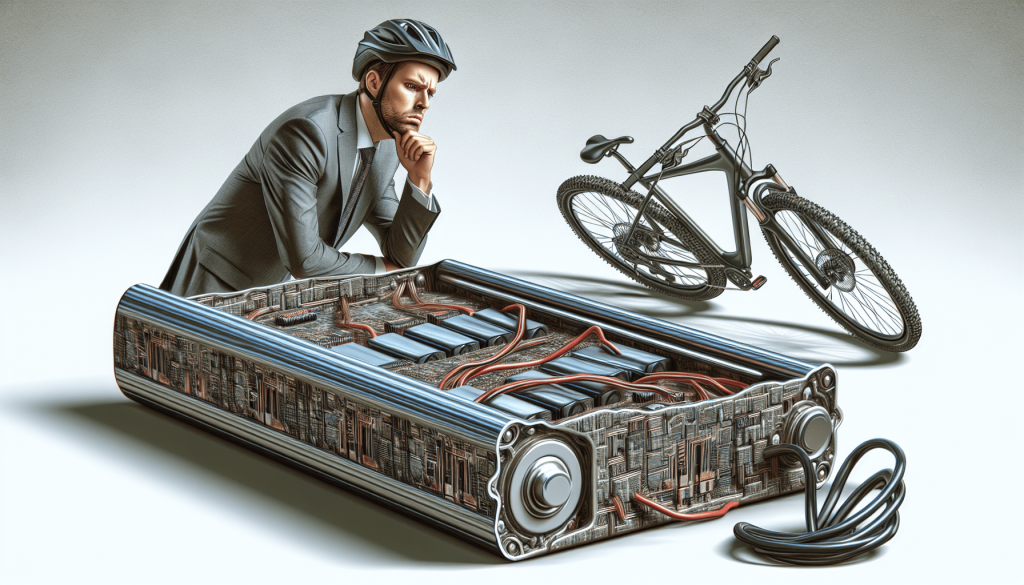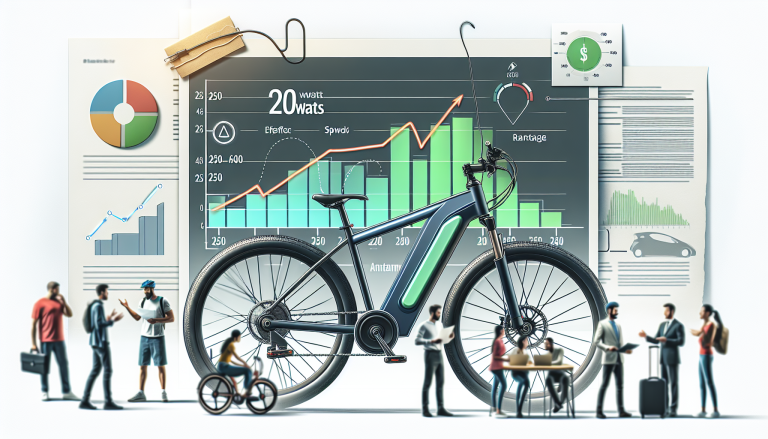Why Is My Ebike Battery Draining So Fast?
Have you ever wondered why your ebike battery seems to drain so quickly? You hop on your electric bike, ready for an enjoyable ride, and yet within a short distance, you notice a significant decrease in battery life. It can be frustrating and leave you questioning if there is something wrong with your ebike. In this article, we will explore the possible reasons why your ebike battery might be draining so fast, providing you with valuable insights and potential solutions to ensure a longer and more enjoyable ride with your electric bike.

Battery Age
Battery capacity decreases with age
As your ebike battery ages, its capacity to store and provide power gradually decreases. This means that the amount of distance you can cover on a single charge will decrease over time. Just like other types of batteries, the chemical reactions that occur within the battery cells will naturally degrade over time. While this is unavoidable, it’s important to note that the rate at which battery capacity decreases will vary depending on factors such as the quality of the battery and how well it has been maintained.
The older the battery, the faster it drains
In addition to the decrease in overall capacity, an old ebike battery may also drain faster during your rides. This is because the internal resistance of the battery increases as it ages. Higher internal resistance means that more energy is lost as heat during the discharge process, resulting in a shorter runtime for your battery. If you notice that your battery is not lasting as long as it used to, it may be a sign that it is nearing the end of its lifespan.
Consider replacing an old battery
If you frequently find yourself running out of battery power during your rides or if you notice a significant decrease in the overall capacity and runtime of your battery, it may be time to consider replacing it. While this can be an additional expense, investing in a new battery can greatly improve your riding experience and allow you to cover longer distances without worrying about running out of power. Additionally, newer battery models often come with improved energy densities and other features that can enhance the performance and efficiency of your ebike.
Battery Type
Different battery chemistries have different energy densities
Not all ebike batteries are created equal. Different battery chemistries, such as lithium-ion and lead-acid, have varying energy densities. Energy density refers to the amount of energy that can be stored within a specific volume or weight of the battery. Generally, lithium-ion batteries have a higher energy density compared to lead-acid batteries. This means that lithium-ion batteries can store more energy in a smaller and lighter package, allowing for longer rides between charges.
Lithium-ion batteries have higher energy density
Lithium-ion batteries are popular among ebike riders due to their high energy density. They provide a good balance between weight, size, and capacity, making them ideal for powering electric bikes. The higher energy density of lithium-ion batteries allows for longer rides without the need for frequent recharging. If you are currently using a lead-acid battery and are looking to upgrade, consider switching to a lithium-ion battery for improved performance and longer-lasting power.
Lead-acid batteries have lower energy density
Lead-acid batteries, on the other hand, have a lower energy density compared to lithium-ion batteries. This means that they are heavier and bulkier for the same capacity. While lead-acid batteries can still power an ebike, they may not provide the same level of efficiency and range as lithium-ion batteries. If you find that your lead-acid battery is not meeting your needs in terms of range and overall performance, upgrading to a higher energy density battery, such as a lithium-ion one, is worth considering.
Consider upgrading to a high-density battery
If you want to maximize the range and overall performance of your electric bike, it may be worth considering upgrading to a battery with a higher energy density. While this may come at a higher cost, the benefits of longer rides and improved efficiency can outweigh the initial investment. Before making any upgrades, make sure to check compatibility with your ebike and consult with the manufacturer or a knowledgeable professional for guidance.
Battery Size
Larger batteries store more energy
When it comes to ebike batteries, size does matter. Generally, larger batteries have a higher capacity and can store more energy compared to smaller ones. This means that a larger battery can provide you with a longer range and more time on the road before needing to recharge. If you often find yourself running out of battery power during your rides, consider upgrading to a larger battery that can provide the extra energy you need.
Small batteries may not provide enough power for long rides
If your current ebike battery is small in size, it may not have the capacity to sustain long rides without frequent recharging. Small batteries are often designed for shorter trips or occasional use, and they may not be suitable for those who rely heavily on their ebikes for daily commuting or long-distance rides. Assess your riding needs and consider upgrading to a larger battery if you find that your current one is not providing enough power for your desired range.
Consider upgrading to a larger battery
Upgrading to a larger battery can offer several advantages. With a higher capacity, you can extend your range and enjoy longer rides without the worry of running out of power. Whether you frequently commute long distances, enjoy exploring off-road trails, or simply want to have the peace of mind of extra power, a larger battery can provide you with the energy you need. Before making the upgrade, make sure to check compatibility with your ebike and consider the weight and size implications of a larger battery.
Riding Style
Aggressive riding leads to faster battery drain
Your riding style plays a significant role in how quickly your ebike battery drains. If you have a tendency to ride aggressively, constantly accelerating and braking, you will consume more power and deplete your battery at a faster rate. Aggressive acceleration and frequent braking require a significant amount of energy, and the more you use these techniques, the less energy your battery will have available for the actual ride.
Accelerating and braking too frequently consume more power
When you accelerate rapidly, you demand more power from your battery to reach higher speeds quickly. Similarly, braking frequently and abruptly wastes energy, as the energy used to accelerate is lost during the braking process. By minimizing these aggressive riding habits, you can optimize your battery life and ensure a longer ride.
Maintaining a steady speed conserves battery life
One of the best ways to conserve battery life is by maintaining a steady speed throughout your ride. Avoid unnecessary acceleration and braking by anticipating traffic or road conditions ahead. By maintaining a constant speed, your battery can operate more efficiently, and you can maximize your riding distance on a single charge. Smooth and controlled riding not only benefits your battery life but also enhances your overall riding experience.
Avoid excessive use of throttle or boost modes
Many electric bikes offer throttle or boost modes that provide an extra burst of power for quick acceleration or assistance on challenging terrains. While these features can be useful in certain situations, excessive use of throttle or boost modes can significantly drain your battery. It’s important to strike a balance and use these modes sparingly when you truly need them, as they can consume a large amount of energy in a short period of time.

Terrain
Hilly terrain requires more power to climb
The terrain you ride on can also impact your battery life. Riding on hilly or mountainous terrain requires more power to climb uphill, resulting in a faster drain on your battery. When you ride uphill, the motor has to work harder to overcome the gravitational force, consuming more energy in the process. If you frequently ride in hilly areas, it’s essential to consider the extra energy demands and plan your route accordingly to ensure you have enough power to complete your ride.
Off-road riding can drain the battery faster
If you enjoy off-road riding, be aware that it can drain your battery faster compared to riding on smooth pavement. Off-road terrains often feature uneven surfaces, loose gravel, and obstacles that require the motor to work harder. This increased demand for power can deplete your battery at a quicker rate. If you frequently ride off-road, it may be necessary to adjust your expectations for range and consider carrying a spare battery or ensuring you have access to charging points along your route.
Consider adjusting the pedal assist level based on terrain
Many electric bikes come with multiple levels of pedal assist, allowing you to choose the amount of assistance you receive from the motor. When riding on challenging terrains like hills or rough surfaces, it can be beneficial to adjust the pedal assist level accordingly. Increasing the level of assistance can reduce the strain on your battery and help you tackle more demanding terrain with ease. Conversely, decreasing the assistance level on flat or downhill sections can conserve battery power for when you truly need it.
Weather Conditions
Extreme temperatures affect battery performance
Weather conditions, especially extreme temperatures, can have an impact on the performance of your ebike battery. Both very cold and hot temperatures can affect the chemical reactions within the battery cells, leading to reduced capacity and overall performance.
Cold weather reduces battery capacity
Cold weather has a negative impact on battery capacity. When the temperature drops, the chemical reactions within the battery slow down, resulting in a decrease in available energy. Cold temperatures can “numb” the battery, making it less effective at delivering power to the motor. If you frequently ride in cold conditions, be aware that your battery may not perform at its best and adjust your expectations accordingly.
Hot weather can cause the battery to overheat
On the other hand, hot weather can cause the battery to overheat. Excessive heat can speed up the chemical reactions within the battery, potentially leading to reduced lifespan and performance. It’s important to keep your battery cool and avoid exposing it to direct sunlight or extreme heat for extended periods. If you live in a hot climate, consider storing your bike in a cool, shaded area or investing in accessories such as heat-resistant battery covers.
Store the battery in a moderate temperature when not in use
To ensure optimal battery performance and longevity, it’s crucial to store your battery in a moderate temperature when not in use. Extreme temperature fluctuations can negatively affect the battery’s chemistry and overall health. If you won’t be using your ebike for an extended period, store the battery separately in a cool and dry place, away from direct sunlight or extreme cold. This will help preserve its capacity and ensure the best possible performance when you’re ready to ride again.

Accessories
Additional accessories like lights or phone chargers draw power from the battery
Many riders like to customize their electric bikes with additional accessories such as lights, phone chargers, or bike computers. While these accessories can enhance your riding experience, it’s important to be aware that they draw power from your ebike battery. The more accessories you have connected, the more energy you will consume and the faster your battery will drain.
Use accessories sparingly to conserve battery life
To conserve battery life, it’s important to use accessories sparingly and only when necessary. For example, if you’re riding during the day, you may not need to have your lights on at all times. Consider using energy-efficient accessories or those that are specifically designed to minimize power consumption. By being mindful of accessory usage, you can extend the runtime of your battery and ensure you have enough power for your ride.
Maintenance
Improper maintenance can reduce battery efficiency
Proper maintenance is essential for maximizing the efficiency and lifespan of your ebike battery. Neglecting routine maintenance tasks can lead to reduced battery efficiency and overall performance. By incorporating regular maintenance into your routine, you can ensure that your battery operates at its best and provides you with optimal power and range.
Regularly clean and lubricate bike components
One important maintenance task is regularly cleaning and lubricating your bike components. Dirt and debris can accumulate on key parts of your bike, including the battery contacts, and impede the flow of electricity. Additionally, keeping your drivetrain clean and well-lubricated helps reduce friction and energy loss while riding, ensuring that more of the energy from the battery is utilized for propulsion.
Check tire pressure and ensure smooth operation
Maintaining proper tire pressure is another maintenance task that can impact battery efficiency. Underinflated tires create more rolling resistance, requiring the motor to work harder and consume more power. Regularly check and inflate your tires to the recommended pressure to optimize energy efficiency. In addition, ensure that all other bike components, such as brakes and gears, are functioning properly and smoothly. Any mechanical issues can lead to energy wastage and decreased battery performance.
Keep the battery contacts clean and free from corrosion
Clean and corrosion-free battery contacts are crucial for efficient power transfer between the battery and the motor. Over time, dirt, moisture, or corrosion can accumulate on the battery contacts and hinder their ability to conduct electricity effectively. Regularly inspect the battery contacts and clean them using a soft cloth or brush and an appropriate contact cleaner if necessary. By maintaining clean and corrosion-free contacts, you can ensure optimal performance from your ebike battery.

Charging Habits
Frequent partial charging can affect battery performance
Your charging habits can also have an impact on the performance and lifespan of your ebike battery. Frequently charging your battery to a high level and then only partially discharging it can affect its overall performance over time. This phenomenon, known as the memory effect, can cause the battery to “forget” its full capacity and result in reduced runtime. To avoid the memory effect, it’s recommended to discharge your battery fully every once in a while, followed by a full charge.
Avoid leaving the battery fully discharged for prolonged periods
Leaving your ebike battery fully discharged for prolonged periods can also negatively affect its performance. When a battery is fully discharged and left in that state for an extended period, it can enter a deep discharge state, leading to permanent damage or reduced capacity. To prevent this from happening, it’s important to recharge your battery promptly after each ride, especially if the battery is fully discharged. Regularly topping up your battery charge even if you haven’t used it can help prevent deep discharge and ensure the longest possible lifespan.
Use the recommended charger provided by the manufacturer
Using the recommended charger provided by the manufacturer is crucial for both safety and battery performance. The charger is designed specifically for your ebike battery, ensuring the correct voltage, current, and charging algorithm. Using a different charger may lead to inadequate charging or even damage to the battery. If you no longer have the original charger or need a replacement, make sure to purchase one that is specifically designed for your battery model and consult the manufacturer or a knowledgeable professional if you have any doubts.
Follow the proper charging cycles and instructions
To maximize the lifespan and performance of your ebike battery, it’s essential to follow the proper charging cycles and instructions provided by the manufacturer. Different battery chemistries and models may have specific recommendations for charging times, charging levels, and maintenance procedures. By adhering to these guidelines, you can optimize the overall life and capacity of your battery. If you have any questions or concerns about your battery’s charging process, reach out to the manufacturer or a reputable dealer for assistance.
System Malfunctions
Faulty electrical components or wiring can lead to excess power consumption
If you’re experiencing unusually fast battery drain, it could be a sign of a system malfunction. Faulty electrical components or wiring can cause the motor or other parts of the electrical system to draw more power than necessary, resulting in reduced battery runtime. If you suspect a malfunction, it’s important to have your ebike inspected by a professional who can identify and rectify any issues.
Get the bike inspected by a professional
If you’re unsure about the cause of your fast battery drain or suspect a system malfunction, it’s best to have your ebike inspected by a professional. They have the knowledge and expertise to diagnose and fix any electrical or mechanical issues that may be affecting your battery performance. Regular maintenance and professional inspections can help prolong the life of your battery and ensure your ebike is operating safely and efficiently.
Check for error codes or unusual behavior
Another sign of a possible system malfunction is the presence of error codes or unusual behavior from your ebike. Modern electric bikes are often equipped with diagnostic systems that can display error codes to indicate specific issues or malfunctions. If you notice any error codes or experience abnormal behavior, such as sudden loss of power or unpredictable motor performance, it’s important to take note of the symptoms and communicate them to a professional during the inspection process.
Repair or replace any malfunctioning parts
Once a professional has diagnosed any malfunctions or identified faulty components, it’s important to promptly repair or replace them. Continuing to use an ebike with malfunctioning parts can not only adversely affect your battery life but also pose a safety risk. It’s recommended to have any necessary repairs or replacements performed by a qualified technician or authorized service center to ensure the proper functioning of your ebike’s electrical system and its compatibility with the battery.
In conclusion, there are several factors that can contribute to the fast drain of your ebike battery. Battery age, type, size, riding style, terrain, weather conditions, accessories, maintenance, charging habits, and system malfunctions all play a role in battery performance. By understanding and taking these factors into consideration, you can optimize the lifespan, range, and overall efficiency of your ebike’s battery. Remember to regularly maintain your bike and battery, ride with a controlled and efficient style, and consult professionals when needed. With proper care and attention, you can enjoy extended rides and reliable performance from your ebike battery.








